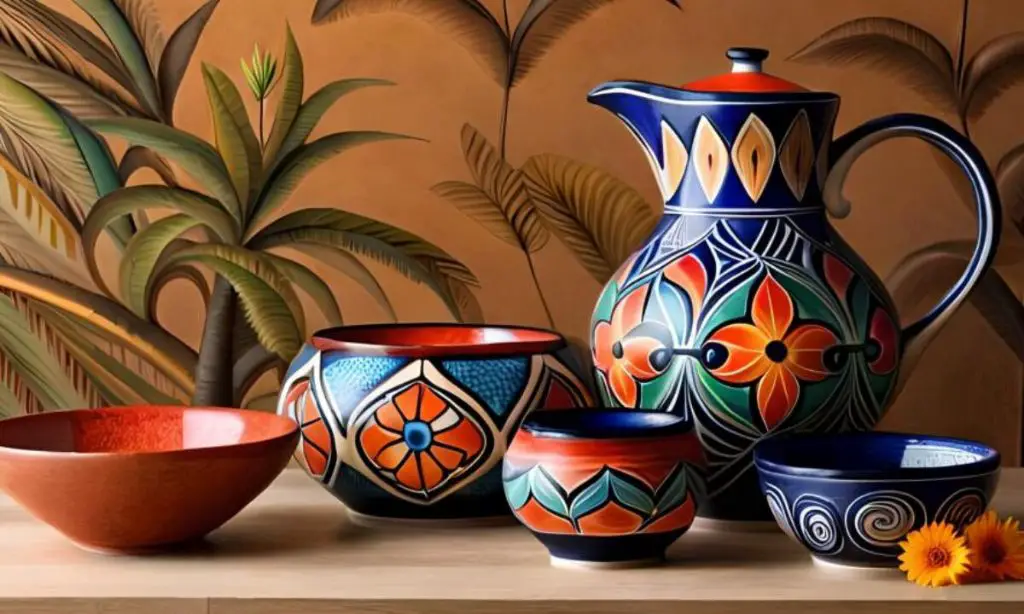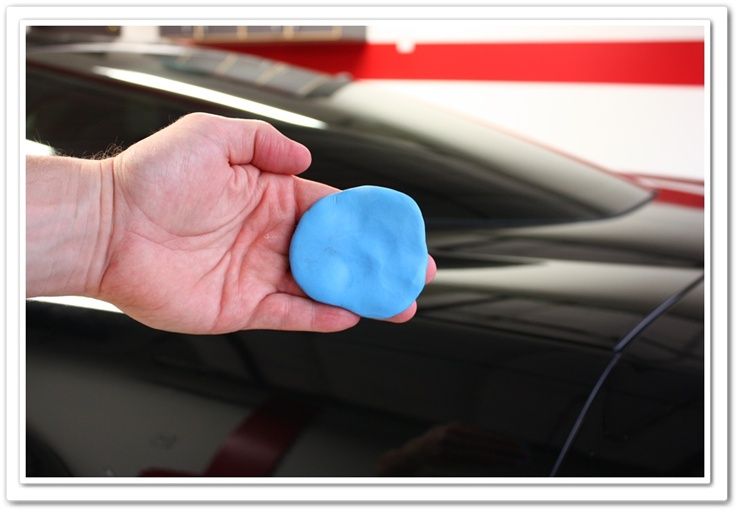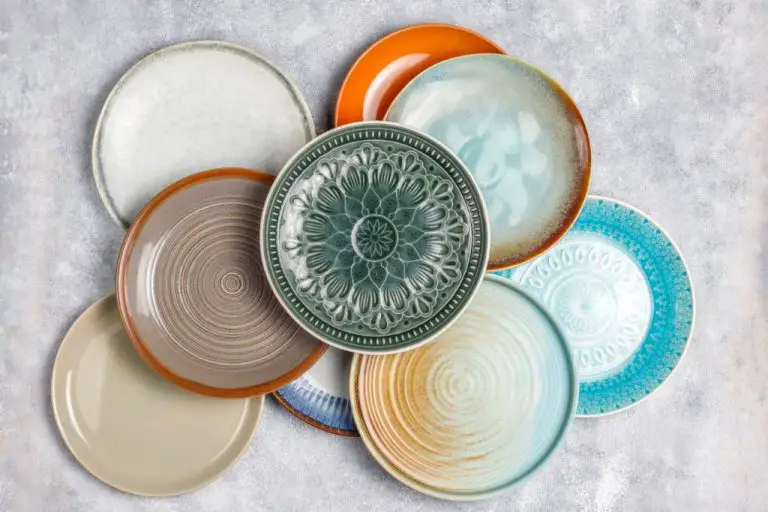What Is The Name Of Mexican Pottery?
Mexican pottery has a long and rich history dating back thousands of years. Some of the earliest pottery from Mexico comes from the Olmec culture, considered to be the first major civilization in Mesoamerica. The ancient Maya and Aztec cultures also produced distinctive styles of pottery for utilitarian and ceremonial purposes.
Over the centuries, several notable pottery styles and techniques developed in Mexico. These include the ornate majolica tradition brought over by the Spanish, the beautiful blue and white Talavera pottery, and the burnished black pottery known as barro negro. Mexico has many pottery centers known for their unique regional styles, including Guadalajara, Guanajuato, Puebla, Oaxaca, and Michoacán.
Today, Mexican pottery maintains many of its long-held traditions while also incorporating modern designs and techniques. The legacy of Mexican ceramics lives on through contemporary potters creating both decorative and functional wares using ancient methods like coiling and open firing.
Common Types of Mexican Pottery
Mexico has a rich tradition of pottery making dating back thousands of years. Over time, distinct regional styles and techniques have emerged, creating a diverse array of Mexican pottery.
Some of the most common types of Mexican pottery include:
- Terracotta – One of the oldest and most basic types, terracotta is an unglazed, low-fired clay. It ranges in color from orange to brown or gray. Terracotta is sturdy, porous, and frequently used for utilitarian items like pots, plates, and bricks.
- Majolica – This tin-glazed earthenware features vibrant hand-painted decorative designs. Majolica techniques came to Mexico from Spain during colonial times. Traditional colors include blue, yellow, green and orange.
- Burnished Ware – Burnishing creates a polished look by rubbing the clay surface with a smooth object before firing. Burnished pieces showcase the natural colors and textures of the clay. Burnishing originated in ancient Mesoamerica.
- Glazed Pottery – Glazes like lead, iron oxide and other minerals create glossy coatings in diverse colors. They provide water resistance and decoration. Unglazed terracotta is frequently glazed to make it functional.
- Slipware – Liquid clay slip is applied to leather-hard unfired clay as decoration. The slip adheres and changes color during firing. Common techniques include banding, trailing, feathering and sgraffito.
These classic pottery types have evolved through the centuries into the vibrant styles we recognize as Mexican ceramics today. Distinct glazing and painting methods identify pottery from specific towns and workshops. (https://www.wanderwithwonder.com/mexican-pottery-traditions-colorful-souvenirs-and-collectible-art/)
Maya Pottery
One of the most well-known types of ancient Mexican pottery comes from the Maya civilization. Maya ceramics date back to around 2000 BC and continued to be produced up until the Spanish conquest in the 16th century.
Maya pottery was primarily made for utilitarian purposes like cooking, storage, and serving food and drink. However, fine painted pottery for ceremonies, rituals, and burials was also created. Ancient Maya Painted Ceramics | Essay says that Maya pottery was built completely by hand, without the use of a potter’s wheel. Clay slip and mineral pigments were used for painted decoration.
Common shapes for Maya ceramics included plates, bowls, jars, and upright necks for pouring liquids. Decorative techniques involved painting, incising, applique, modeling, and stamping. Jaguar, snake, bird, and mythological designs were prevalent. According to Maya ceramics – Wikipedia, the traditions and skills of Maya pottery were passed down through generations.
Today, Maya-inspired ceramics are still made in regions of Mexico, Guatemala, Belize, and Honduras that were once part of the ancient civilization. Archeological finds of surviving Maya pottery also provide insight into their art, culture, and day-to-day life.
Aztec Pottery
Aztec pottery refers to the ceramic objects made in Mesoamerica before and during the time of the Aztec empire from 1300 to 1521 CE. Aztec potters crafted a wide variety of functional and decorative vessels, tools, figurines, and sculptures using well-developed techniques.
Distinctive aspects of Aztec pottery included the use of molds to mass-produce pieces and the production of thin Orange wares decorated with paints and slips. Aztec potters skillfully used the coiling technique to construct vessels and often decorated surfaces with flowing geometric designs, stylized plants and animals, deities, and scenes from mythology before firing brightly painted vessels. Reliefs and sculptures depicted gods and rituals. Utilitarian molded figurines represented daily life, animals, and people.
Highly skilled Aztec potters produced fine polychrome and burnished wares for elites. More basic natural clay pots and griddle plates served everyday cooking and storage needs. The diversity and craft of Aztec pottery illustrates the artistry and innovations of Aztec civilization.
Mexican Tin-Glazed Majolica
Mexican majolica pottery is a type of tin-glazed earthenware that developed as a result of Spanish influence after the 16th century colonial period. The term “majolica” refers to Italian-style earthenware covered with an opaque lead glaze containing tin oxide. This glazing technique was brought to Mexico by Spanish settlers.
The majolica tradition originated in the Spanish town of Talavera de la Reina. Over time, Mexican artisans adapted the style by incorporating pre-Hispanic artistic elements and more vivid colors. While early Mexican majolica closely resembled the pottery of Spain, it eventually evolved into a unique style of its own.
One distinctive feature of Mexican majolica is the use of colorful glazes and hand-painted decorative designs. Common motifs include geometric patterns, flower motifs, animal figures, and scenes from daily life. The pottery ranges from functional wares to fanciful figural sculptures. It was traditionally produced in central Mexico in cities such as Puebla, Mexico City, Guanajuato, and Dolores Hidalgo (https://www.lafuente.com/Mexican-Decor/Santa-Rosa-Majolica/).
Today, Mexican majolica remains a beloved folk art tradition. It offers a glimpse into Mexico’s complex cultural history through its synthesis of indigenous, Spanish, and Mexican Revolution-era influences.
Talavera Pottery
Talavera pottery refers to the brightly painted, tin-enameled earthenware produced in the city of Puebla and nearby communities in Mexico. The style originated in 16th century Spain but became elaborately developed in Mexico. True Talavera pottery comes only from the city of Puebla and the nearby communities of Atlixco, Cholula, and Tecali, as the production is protected by Denomination of Origin requirements (Talavera Pottery Mexico).

Talavera pottery is characterized by its bright colors and intricate, detailed decorative patterns. Common motifs include geometric shapes, floral designs, animals, and birds. The patterns are painted on by hand and the pots are fired twice, resulting in a shiny, brightly colored finish.
Talavera pottery is a fascinating fusion of Spanish and Mexican cultures. The Spanish introduced the technique of tin-glazing, known as majolica, while the native artisans added their own artistic touches and designs. The result is a uniquely Mexican art form renowned for its beauty and craftsmanship.
Today, Talavera pottery remains a point of pride for Puebla. Authentic Talavera pottery can be expensive, as the process is labor-intensive and requires highly skilled artisans. There are cheaper imitations made in other parts of Mexico, but true Talavera comes only from Puebla.
Barro Negro Pottery
Barro Negro, meaning “black clay” in Spanish, refers to a style of burnished black pottery originating from San Bartolo Coyotepec and other villages around Oaxaca, Mexico. According to the University of Texas, barro negro dates back to before the arrival of the Spanish in Mexico. The clay and production process impart a metallic sheen to the finished pottery pieces.
Barro negro utilizes a locally sourced black clay found near Rio Atoyac in the Central Valleys of Oaxaca (Source: Etsy – Barro Negro). The clay naturally turns black when fired due to its high iron content. Potters shape the clay vessels by hand using the coil technique before polishing and burnishing them to a glossy finish.
While the origins of barro negro are ancient, it experienced a resurgence in the 1950s under the leadership of Doña Rosa and her son Juan Quezada of San Bartolo Coyotepec. They helped revive and popularize the traditional techniques and designs of barro negro pottery. Today it remains an important Mexican folk art tradition, with production centered in Oaxaca but pieces sold across Mexico and internationally.
Contemporary Mexican Pottery
Contemporary Mexican pottery incorporates modern aesthetic styles with long-standing pottery techniques and traditions. Many Mexican artisans craft contemporary pieces that put a fresh spin on classic decorative styles like Talavera while retaining the same painstaking handmade production methods.
Contemporary Mexican pottery often features bright, vibrant glazes in colors like turquoise, bright yellow and terra cotta orange. Modern shapes include angular bowls, platters and vases as opposed to more traditional rounded forms. Standard glazing methods like tin-glazing are combined with more modern techniques like mishima involving etching designs through resist layers of slip. Abstract geometric patterns and stylized animal motifs reflect both pre-Hispanic and contemporary design influences.
While ancient pottery techniques remain integral to production, modern technologies and materials are often incorporated as well. Some artisans utilize electric kilns for firing while still employing time-honored hand-building and decoration methods. There is also experimentation with alternative clays, slips, pigments and glazes compared to more conventional materials and finishes.
Well-known contemporary pottery production centers include Metepec, Tonalá, and Oaxaca which build on their rich regional histories while embracing current styles and artistic innovations. Both collaborative workshops and individual family studios create unique pieces for the global collectors’ market.Contemporary Mexican pottery also features prominently in museum exhibitions spotlighting modern Mexican art and design.
Notable Pottery Regions
Mexico has several regions that are well-known for their pottery production and artistry. Two of the most important are the Guadalajara area, specifically the suburb of Tlaquepaque, and Oaxaca in southern Mexico.
Tlaquepaque is located just outside of Guadalajara in the state of Jalisco. For centuries, it has been the epicenter of Mexican ceramics. Tlaquepaque pottery focuses on brightly colored and highly decorated pieces, often with intricate painted designs. Motifs include animals, flowers, and geometric patterns. According to “Where to Shop in Tlaquepaque, Guadalajara”, it’s considered one of Mexico’s most important pottery regions. The historic center has many shops and art galleries to browse.
Oaxaca in southern Mexico also has a long tradition of pottery making, particularly in the villages of San Bartolo Coyotepec and Santa María Atzompa. The area is known for its green glazed pottery, originally developed to imitate jade. Common motifs are animals and mythological creatures. Oaxaca pottery often has a matte finish rather than high gloss. Their barro negro pottery is fired at a low temperature, giving it a unique black color.
The Legacy and Influence of Mexican Pottery
Mexican pottery holds great significance and cultural importance in the history and artistry of Mexico. Pottery-making has been an integral part of Mexican culture for thousands of years, dating back to pre-Hispanic civilizations like the Olmecs, Maya, Aztec, and others. The legacy of these early pottery traditions continues to influence Mexican pottery today.
Mexican pottery techniques and designs showcase the rich cultural heritage of Mexico. Styles like the burnished black pottery of Oaxaca and Talavera reflect Mexico’s diverse indigenous, Spanish, and multicultural roots. The use of local clays and natural pigments connects modern pottery to ancient traditions.
Beyond Mexico, these iconic pottery styles have impacted art and design globally. Talavera pottery inspired the tin-glazed majolica tradition that spread to Spain and Europe. Mexican pottery motifs and vibrant colors can be seen in textiles, murals, and other arts worldwide. As an expression of community identity and pride, Mexican pottery continues to be celebrated both domestically and internationally.
Today, Mexican pottery is collected and displayed in major museums globally. Pottery towns like Metepec and Tlaquepaque have become popular tourist destinations. Mexican ceramic arts remain a dynamic tradition, as artisans reinterpret ancestral techniques to create innovative contemporary works. The global appreciation of Mexican pottery speaks to its cultural resonance and timeless appeal.


